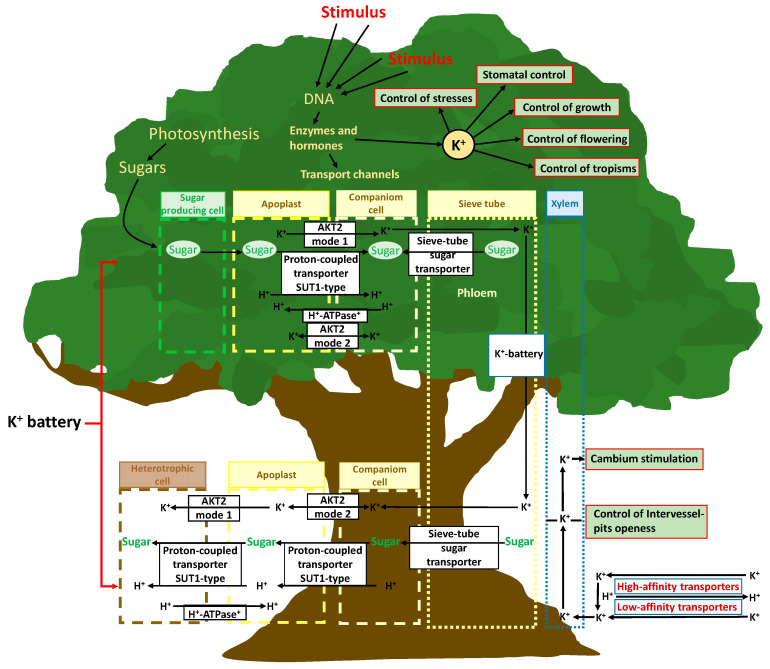Figure 1.
Schematic of the role of K+ in plant antistress responses. The transcriptional and post-transcriptional control of K+ passive and active membrane transporters is a central topic of current research, owing to their important role in plant development, functionality, and control of responses to environmental stresses that they activate. However, several other parallel stress mechanisms allow K+ replenishment and, thus, enhance stress tolerance. Further, external or internal stimuli (e.g., drought, changes in cellular osmotic pressure or pH, changes in metabolite concentrations, or excess light or oxidation) mediate responses by activating genes encoding hormones and/or proteins that can catalyze the transcription of genes that produce high-affinity K+ channels. An adequate supply of potassium allows a reduction of carbohydrates in leaf cells by counterbalance mechanisms between K+ and organic osmolites in cells. Carbohydrates, mostly in terms of hexose content, are decreased in leaves due to a sufficient K+ supply and transported to another plant organ, owing to better phloem activity. AKT2 transporters can operate in mode 1 as an inward-rectifying channel, or as mode 2 as a nonrectifying channel.

